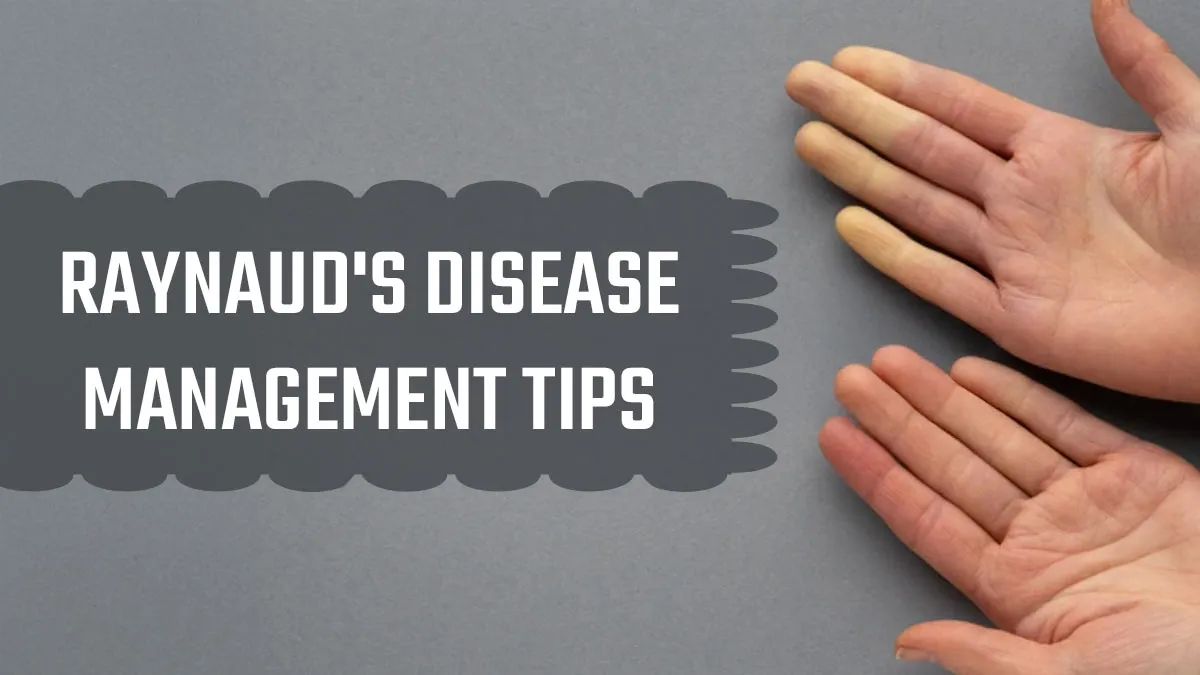
Have you ever gone outside on a cold day only to find your fingers or toes numb and ghostly white? For people with Raynaud's disease, this response isn't merely an occasional annoyance; it's a daily struggle caused by cold temperatures or stress. The condition interferes with blood flow, causing everyday activities, such as grasping a cold beverage or walking in cold weather to be a painful experience. Raynaud's disease cannot be cured, but lifestyle adjustments and preventive measures can help manage symptoms effectively.
Table of Content:-

Raynaud's disease is a condition in which the small arteries of the extremities overreact to cold or stress and cause episodes of reduced blood flow known as vasospasms. These episodes may cause fingers and toes, and occasionally even the nose and ears, to whiten or blue before they redden and tingle as blood flow returns.
There are two forms of Raynaud's disease:
- Primary Raynaud's: The more common and less severe type, occurring without a pre-existing medical condition.
- Secondary Raynaud's: This form is accompanied by other diseases, such as lupus, scleroderma, or rheumatoid arthritis, leading to more severe complications.
Common Triggers of Raynaud's Flare-Ups

- Cold temperatures: Exposure to cold temperatures or contact with cold items can trigger symptoms.
- Anxiety and stress: Emotional stress makes blood vessels constrict and induces flare-ups.
- Caffeine and smoking: Both tend to constrict blood vessels and make symptoms worse.
- Medications: Certain medications for high blood pressure, migraine medications, and decongestants may make Raynaud's symptoms worse.
Also Read: How Raynaud's Phenomenon Affects Your Fingers And Toes: What Is This Condition?
Tips to Manage Pain and Prevent Flare-Ups
1. Keep Your Hands and Feet Warm

- Wear warm clothing, thick socks, and gloves when it is cold.
- Use hand warmers or heated gloves if you frequently get exposed to cold temperatures.
- Keep your home at a comfortable temperature and utilise heated blankets if needed.
2. Manage Stress Effectively
- Use relaxation techniques, such as deep breathing, meditation, and yoga to minimise stress levels.
- Enjoy activities and hobbies that induce relaxation and emotional health.
- Maintain a regular sleep pattern for overall well-being and stress.
3. Avoid Triggers That Worsen Symptoms

- Avoid taking caffeine and nicotine, as it can constrict your blood vessels.
- Watch out for drugs that increase symptoms and seek alternatives from your doctor.
- Protect against sudden exposure to cold air by dressing accordingly and gradually increasing your body heat before going outdoors in winter.
Also Read: Scleroderma Explained: Causes, Symptoms, Diagnosis, Management
4. Enhance Blood Flow
- Exercise regularly to improve circulation and ensure a healthy circulatory system.
- Practise hand and foot exercises like finger and toe stretching and turning to enhance circulation.
- Do not sit or stand in the same position for too long to avoid compromised circulation.
5. Stay Hydrated and Maintain a Healthy Diet

- Drink plenty of water to support overall circulation and prevent dehydration.
- Consume an omega-3 fatty acid-rich diet (fish, flaxseeds, and walnuts) to promote vascular health.
- Add foods rich in antioxidants, including fruits, vegetables, and nuts, to reduce inflammation and enhance blood flow.
6. Protect Your Skin and Extremities
- Moisturise your skin to prevent dryness and cracking, which can worsen symptoms.
- Prevent injuries to your hands and feet, as impaired circulation will hinder healing.
- Wear protective gloves when handling cold or wet surfaces.
7. Consider Medical Treatments When Necessary
- If lifestyle changes prove inadequate, medication like calcium channel blockers will dilate the blood vessels and improve blood flow.
- In severe cases, injections or nerve surgery can be prescribed to minimise flare-ups' frequency and severity.
- Consult with your doctor to track symptoms and modify treatment plans accordingly.
[Disclaimer: This article contains information for informational purposes only. Hence, we advise you to consult your professional if you are dealing with any health issue to avoid complications.]
How we keep this article up to date:
We work with experts and keep a close eye on the latest in health and wellness. Whenever there is a new research or helpful information, we update our articles with accurate and useful advice.
Current Version
